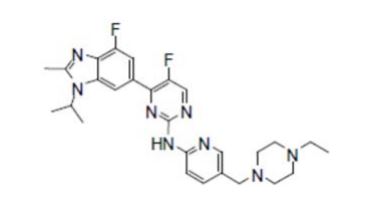FDA BRIEF: Week of September 25, 2017
.jpg)
PENTAX ED34-i10T Duodenoscope
Pentax
INTENDED USE: Provide visualization and access to the upper gastrointestinal (GI) tract to treat bile duct disorders and other upper GI problems.
ADDRESSING UNMET NEED:
- First duodenoscope with a disposable distal cap, a new feature that will improve access for cleaning and reprocessing
- Lowering the risk of future infections associated with these devices
REGULATORY PATHWAY: 510K
- Regulation Name: 876.1500
- Classification Code: FDA
- Classification Name: Duodenoscope And Accessories, Flexible/Rigid
DEVICE DESCRIPTION: NEW FEATURES
- Lightweight, ergonomically-designed control body to minimize hand fatigue during prolonged procedures
- Redesigned elevator improves device control
- New detachable distal-end cap may improve reprocessing efficiency
- HD+ imaging for enhanced visualization of mucosal detail to help improve accuracy during mucosal assessment
- Combined with i-scan image enhancement, clearly visualizes the mucosa in fine detail and may help physicians locate minor papillae
- Redesigned to improve stability for better device control, which may facilitate cannulation
- Newly designed distal end with detachable cap to provide improved access for cleaning and reprocessing post-procedure
FreeStyle Libre Flash Glucose Monitoring System
Abbott Diabetes Care Inc.
INDICATION FOR USE: Continuous glucose monitoring (CGM) device indicated for the management of diabetes in persons age 18 and older. It is designed to replace blood glucose testing for diabetes treatment decisions.
The System detects trends and tracks patterns aiding in the detection of episodes of hyperglycemia and hypoglycemia, facilitating both acute and long-term therapy adjustments. Interpretation of the System readings should be based on the glucose trends and several sequential readings over time. The System is intended for single patient use and requires a prescription.
ADDRESSING UNMET NEED:
- New technology to help care of people living with chronic conditions, such as diabetes, easier and more manageable
- System allows diabetics avoid additional step of fingerstick calibration—with a wave of the mobile reader
REGULATORY PATHWAY: PMA
- Generic Name: Sensor, glucose, invasive, non-adjunctive, factory-calibrated,
user-initiated - Procode: PZE
- Post Approval Study (PAS) required for confirmatory evaluation of safety and effectiveness in intended use population
DEVICE DESCRIPTION:
- Uses an electrochemical sensor to monitor glucose levels in interstitial fluid (ISF)
- Sensor held in place by an adhesive and incorporates both subcutaneously implanted sensor and associated electronics
- Sensor uses glucose oxidase enzyme to oxidize glucose and transfer electrons to a metal electrode, producing a current
- Strength of current is proportional to the amount of glucose present in the subcutaneous space.
- System converts electrical current signal to a glucose value for display to the user on a handheld Reader
- 3 primary components: Sensor, Sensor Insertion Device, Reader
EFFECTIVENESS AND SAFETY:
- Primary effectiveness measurements based on performance evaluation of the System compared to the blood glucose values measured by a laboratory glucose analyzer during in-clinic sessions that spanned the wear period of the device (days 1, 4, 7 and 10)
- Accuracy established across claimed measuring range (40 to 500 mg/dL glucose), precision, 10 day wear period (following the warm-up period) for sensor, notifications (Glucose Messages), and number of readings displayed during wear period
- Risks: Hypoglycemia or hyperglycemia for inaccurate readings and treatment decisions, mild skin irritations
REIMBURSEMENT:
- Coverage limited to patients for whom professional CGM is medically necessary
- Medicare does not have National Coverage Determination for professional CGM
- Most local contractors do not have a policy limiting professional CGM
 SOFIA 2 Fluorescent Immunoassay Analyzer
SOFIA 2 Fluorescent Immunoassay Analyzer
Quidel
INTENDED USE: Bench top analyzer intended to be used with Cassette-based Immunofluorescent in vitro diagnostic assays for professional and laboratory use
- Measurand (analyte): Respiratory Syncytial Virus (RSV) A and B nucleoprotein antigens
REGULATORY PATHWAY: CLIA Waiver
TEST SYSTEM DESCRIPTION:
- Lateral flow immunoassay with sandwich design to qualitatively detect RSV A and RSV B nucleoprotein from nasopharyngeal (NP) swab and nasopharyngeal aspirate/wash (NA/W) specimens collected from pediatric patients
- Four main components: (1) sample pad for receiving specimen (2) label pad containing dried, fluorescently dyed microparticles coated with RSV-specific monoclonal antibodies (3) nitrocellulose test strip for the capture of RSV analyte (4) absorbent pad to drive capillary flow
CLIA WAIVER ASSESSMENT:
- Demonstrating “Simple”: Designed to be simple and easy to use by incorporating the several following features
- Demonstrating “Insignificant Risk of an Erroneous Result”-Failure Alerts and FailSafe Mechanisms
- Demonstrating “Accuracy”
- Proposed Labeling
- Operator Questionnaire Results
REIMBURSEMENT: Appropriate CPT and ICD-9-CM codes to accurately reflect patient condition(s) and testing procedure(s)
 VERZENIO (abemaciclib) Tablet
VERZENIO (abemaciclib) Tablet
Eli Lilly
INDICATION FOR USE:
- in combination with fulvestrant for the treatment of women with hormone receptor (HR)-positive, human epidermal growth factor receptor 2 (HER2)-negative advanced or metastatic breast cancer with disease progression following endocrine therapy
• as monotherapy for the treatment of adult patients with HR-positive, HER2-negative advanced or metastatic breast cancer with disease progression following endocrine therapy and prior chemotherapy in the metastatic setting
ADDRESSING UNMET NEED:
- New targeted treatment option for certain patients with breast cancer who are not responding to treatment
- Can be given as a stand-alone treatment to patients
REGULATORY PATHWAY: NDA
- Priority Review and Breakthrough Therapy designations
- Postmarketing Requuirement: Clinical trial to evaluate effect of severe diarrhea
- Postmarketing Commitment: Overall Survival data, Physiologically based Pharmacokinetic modeling (PBPK) analysis
MECHANISM OF ACTION: Inhibitor of cyclin-dependent kinases 4 and 6; impacts cell cycle progression, and cell proliferation in estrogen receptor-positive (ER+) breast cancer cell lines
EFFICACY:
- Randomized, placebo-controlled, multicenter study in women (n=669) with HR-positive, HER2-negative metastatic breast cancer, in combination with fulvestrant, VERZENIO vs. placebo
- % Number of patients with an event: 49.8% Vs. 70.4%, p<0.0001
- Median months: 16.4 vs. 9.3
- % Objective response rate: 48.1 vs. 21.3
SAFETY:
- Serious side effects: Diarrhea, neutropenia, elevated liver blood tests, deep venous thrombosis/pulmonary embolism, harm to developing fetus
- Common side effects: Diarrhea, neutropenia and leukopenia, nausea, abdominal pain, infections, fatigue, anemia, decreased appetite, vomiting and headache
Image credit: Pentax, Abbott, Quidel, Lilly
